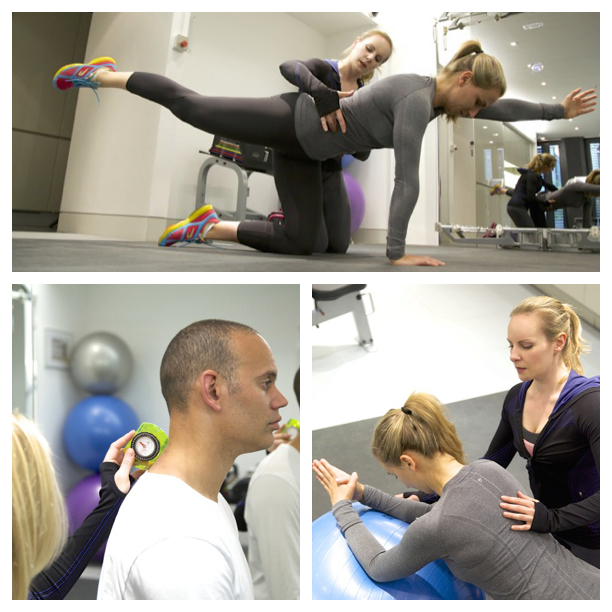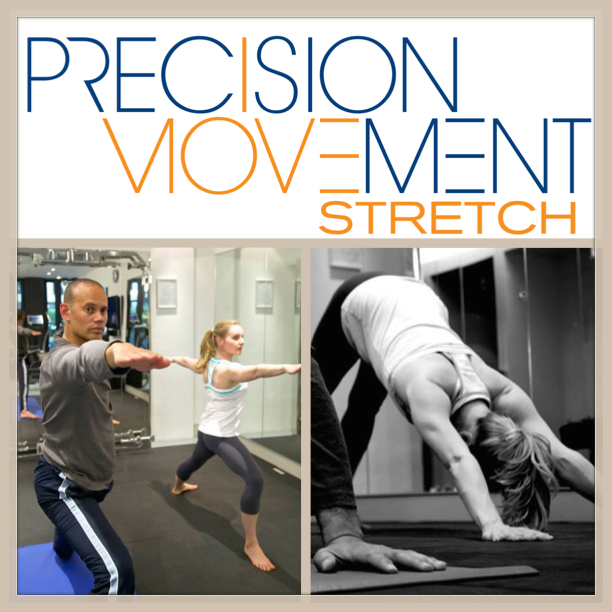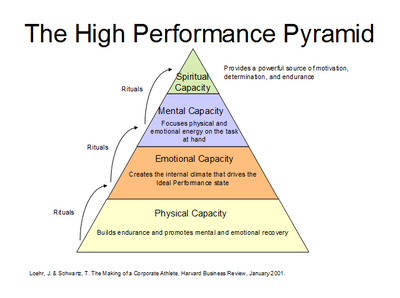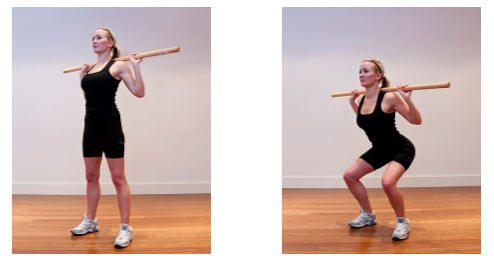I am often asked about which medical treatment is best for back pain or a particular injury. I refer clients to chiropractors as they share a similar philosophy of movement and health as I do. Dr Luther Moss DC, MChiro, PgCert, MCC, co-owner of ML Chiropractic in Fulham, SW London is one such chiropractor that I refer to and I had the opportunity to interview recently about why chiropractic is so helpful to clients recovering from injury and with general overall health. Read on to find out more....
What is chiropractic?
Chiropractors are concerned with maintaining the alignment, flexibility and strength of the body in order to ensure optimal nervous function and health. Although adjustments (which can often result in a crack or pop) are commonly used by chiropractors, we have many other techniques for treatment that I use with patients who still experience fantastic health benefits of proper alignment strength and mobility.
What is the nervous system and how does good joint alignment help its function?
The nervous system is the master control system of your body. The brain is the main computer and the spinal cord and nerves are the wires that allow your brain and body to communicate. Every process within the body is, at its source, controlled by the function of the nervous system and therefore having a healthy and well functioning nervous system is a fundamental requirement for health. Alignment and flexibility of the body (especially the spine) influences the nervous system’s ability to communicate signals from the body to the brain and then back to the body. Through a specific nerve sense called proprioception (movement sense) movement helps to regulate the function of the nervous system. Movement and the nervous system are interdependent - they both need each other and when healthy, help each other function better.
How does chiropractic help poor alignment and injury?
If joints, specifically spinal joints, are misaligned or inflexible then their ability to produce this movement sense is reduced and so compromises the function of the nervous system. Of the 100billion or so nerve fibres in the spinal cord, over half are responsible for transmitting this movement sense and of those 90% come from the spine. Therefore movement, alignment and function of the spine is of paramount importance when considering the health of the nervous system.
In injury better alignment and flexibility leads to faster recovery due to increased nervous function and in daily life it leads to better performance, co-ordination and protection against injury.
(In essence movement represents to the brain what electricity is to a battery on charge, it literally charges the brain to allow better function. Once you understand the huge influence that alignment and flexibility of the spine has on this process, the need to take good care of your spine quickly becomes apparent.)
What roles does chiropractic play in general health?
95% of all health issues are related to one or more of the 3 key areas of health; how we move; how we eat and how we think. Dysfunction in one or more of these areas forces the body to adapt which over a period of time comes at the expense of our health.
Chiropractic focuses on the physical alignment and function side of how we move, optimising function with a view to optimising nervous system performance and allowing our body to express a better level of health. We also help to address the other key areas of nutrition and cognitive function in order to provide a whole health approach to patient care.
What do you specialise in?
My personal area of interest is headaches and migraines. Through detailed neurological testing I firstly help to identify if there is any cause for concern and can make the appropriate referral if necessary. Following this a combination of detailed history taking and chiropractic and orthopaedic physical examination helps to identify the likely cause of the complaint. In many cases misalignment or dysfunction within the neck region is the main culprit. With proper correction of alignment and function of the spine in these cases, the responses can be incredibly powerful with some lifelong sufferers of headaches reporting a complete resolution of their problems I find these patients very satisfying to work with.
What do you think your treatment is MOST helpful with?
The patients that we get the best results with are those who are trying to turn their lives around and have under exercised and overeaten for many years and have normally suffered from long term spinal/body pain. The work we do allows us to coach these patients in the different aspects of their life helping them to become pain free and more importantly have a better level of physical and physiological function.
What do you typically see patients for?
Although the range of patients we see is very large the most common complaint we see is those suffering from lower spinal pain of no apparent onset. This is normally a result of long term problems with posture, movement patterns, diet and stress. People are often confused as to how so much pain can come from no-where but unfortunately that is often the result of failing to properly look after your body.
We also see a range of athletes looking to improve their performance and injury resistance and many people simply come for regular checks to help counteract their physically and emotionally stressful jobs.
How often does someone need treatment?
That is a difficult question to answer as every case is different. However just like getting fit, restoring alignment takes time and dedication; there is no quick fix as we are trying to retrain the body and how it functions. For example someone suffering from acute lower spinal/disc injury a treatment programme may involve 6 treatments in the first 3-4 weeks followed by a further 6 over the next 2 months.
Is your system an intense short term treatment method or more of an ongoing maintenance?
Acute injuries or people with a long term problem often require a period of high intensity treatment initially but our aim is always to get the person as independently healthy as possible as quickly as possible.
Chiropractic is based on a system that is dedicated to optimising people’s long term health and function. Many people then return to us on a regular basis to help maintain alignment and nerve function, they see it as part of their normal health routine alongside exercise and a healthy diet. The frequency of these ‘maintenance’ visits vary from 4-12 weeks. These people are the ones who experience the maximum health benefits from maintaining alignment.
How do you use your treatment for back pain?
Chiropractic adjustments and treatments are recognised as one of the safest, best techniques for the treatment of lower spinal pain. Studies have shown that recovery from mechanical lower back pain using chiropractic has proven to be faster, more effective and less expensive than medical alternatives.
We also see many people recovering from injury or surgery. We can help improve healing times and maintain function during these difficult and often painful periods of time.
Do you believe the patients you see need corrective exercise?
Absolutely. Everyone should be exercising regularly as it is actually impossible to be optimally healthy without exercise and movement being a regular part of your life.
In patients that present with a specific problem, after resolution of their pain or alignment it is essential that they undertake some form of structure exercise in order to maintain the benefits of the treatment and to protect them against injury.
For example someone who presents with headaches as a result of their posture in front of the computer at work can benefit hugely from chiropractic care, however if they fail to improve their postural muscle strength and movement patterns after stopping chiropractic treatment the reality is that their problem with re-occur at some stage.
It is vitally important that these people follow a properly structured routine of exercise focussing on the appropriate muscles and guided by a well trained professional. Pounding miles on a treadmill will not help with alignment problems, patients require a detailed, bespoke and structured exercise routine. Patients who follow a routine show faster recovery from injury, better resilience against future injury and of course, a better overall level of health.
What general advice can you give?
The most important piece of advice is to keep mobile. Immobility i.e. too long hours of sitting or staying still is literally damaging our bodies and our brains. Research now shows that keeping mobile helps to maintain normal brain/neurological function and helps to prevent the onset of many chronic diseases such as arthritis, cardiovascular disease and diabetes.
Luther's top 5 tips for optimising your health:
-Do a minimum of 3 minutes stretching in the morning and the evening (make sure you follow good advice on stretches)
-Set an alarm on your computer for every 40-60minutes and then move when it goes off. Even rolling your shoulders and turning your head from side to side makes a difference, ideally get up and walk for 2-3 mins.
-Do at least 3 sessions of 20 minutes intensive exercise per week - ideally get a personal trainer!
-Challenge yourself regularly by learning new exercise routines or movement patterns to force it to maintain its strength and adaptability.
-Finally drink at least 1.5-2 ltrs of fresh (preferably filtered) water each day. Many people are dehydrated and this is very damaging for your health.
For Precision Movement readers, Luther has kindly offered 50% off initial chiropractic consultation (normally £75) and he is also happy to talk to anyone on the phone for a 10 minute phone consultation free of charge or answer any questions by his personal email -
luther.moss@ml-chiropractic.co.uk
. You can book an initial consult by calling
0207 731 7640
. For more information please visit
www.ml-chiropractic.com
. ML Chiropractic is located at
604 Fulham Road, London, SW6 5RP
.










































